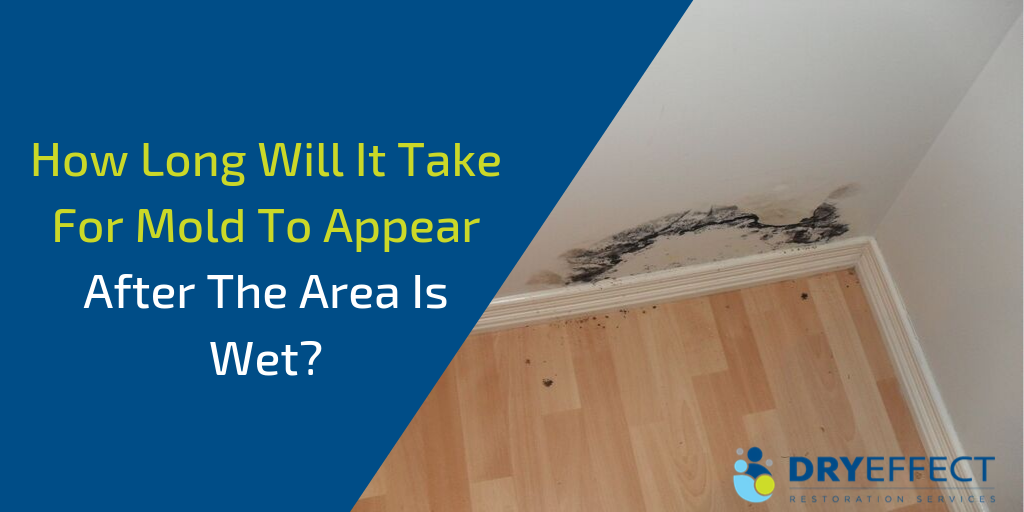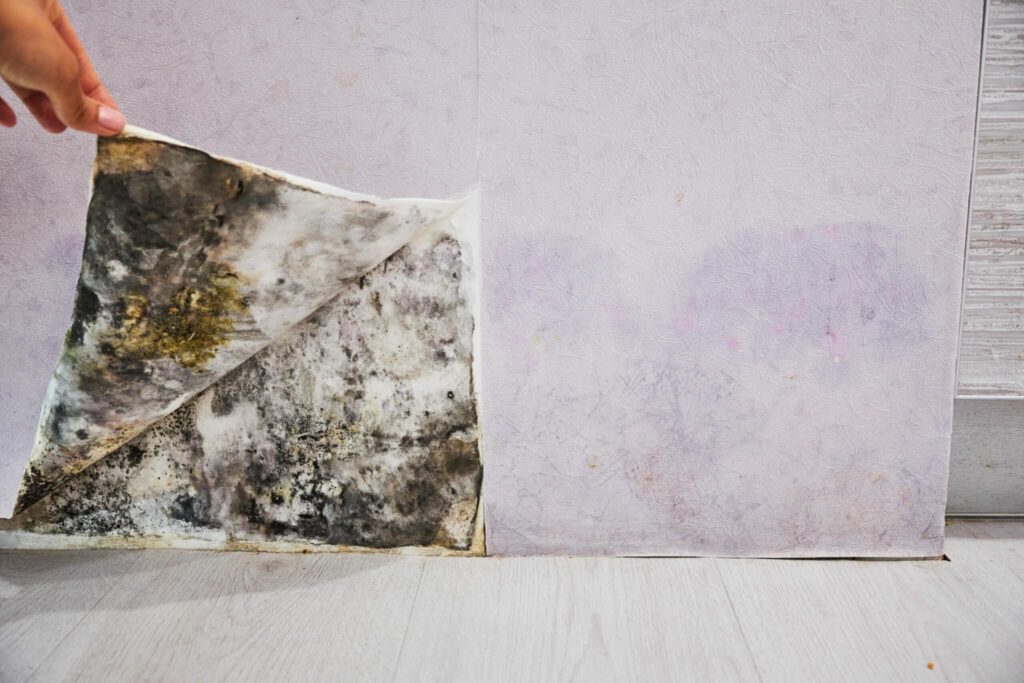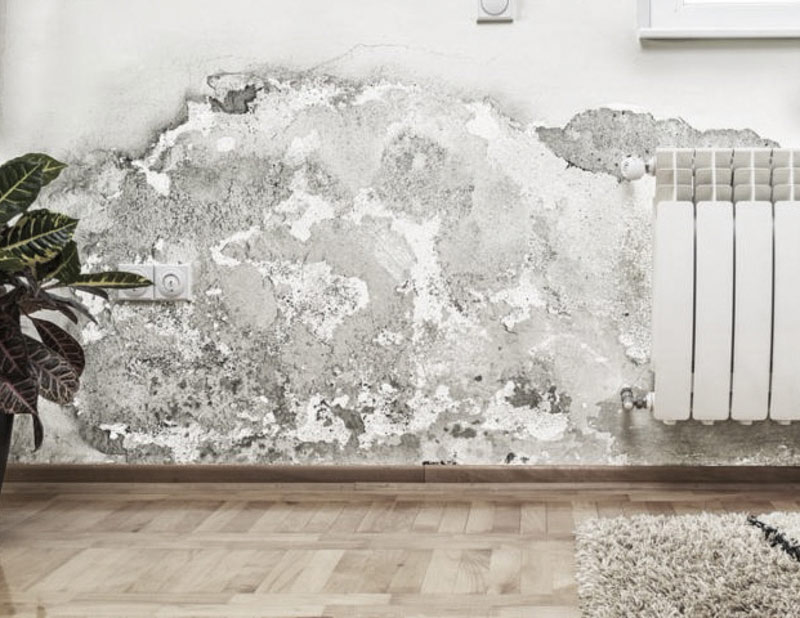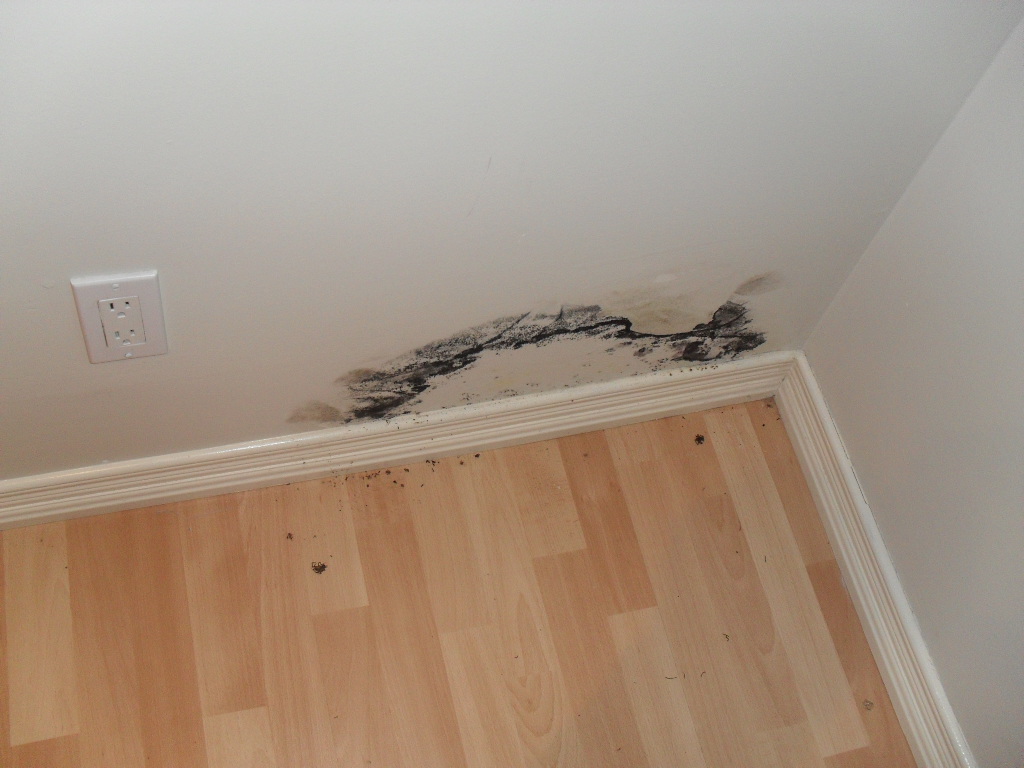Do you know how quickly mold can spread on drywall? It’s a common concern for many homeowners. Mold growth on drywall can occur due to various factors such as moisture, warmth, and poor ventilation. Understanding the rate at which mold spreads on drywall is essential for taking timely action to prevent further damage. In this article, we will explore the factors that contribute to mold growth on drywall, the speed at which it spreads, and effective strategies to combat this problem. By the end of this article, you will have a better understanding of how to protect your drywall from mold and ensure a healthy living environment.
Factors Affecting Mold Growth
Mold, a type of fungus, requires certain environmental conditions to grow and thrive. Understanding the factors that contribute to mold growth is crucial in preventing and dealing with mold issues in your home. The four primary factors that affect mold growth are moisture levels, temperature, humidity levels, and ventilation.
Moisture Levels
Moisture is the most critical factor for mold growth. Mold spores are present in the air and on surfaces everywhere, but they need moisture to germinate and start growing. If there is excessive moisture in your home, whether from a leaky pipe, a roof leak, or high humidity, it creates the perfect conditions for mold to grow rapidly. A wet or damp environment, especially on drywall, can lead to mold growth within a short period.
Temperature
Temperature plays a significant role in mold growth. Most types of mold prefer temperatures between 70 and 90 degrees Fahrenheit (21 to 32 degrees Celsius). However, mold can still grow at lower or higher temperatures but may grow slower or faster, respectively. If your home is consistently at a temperature that falls within the preferred range for mold growth, it can accelerate the colonization and spread of mold on drywall surfaces.
Humidity Levels
Humidity refers to the amount of moisture present in the air. High humidity levels, typically above 60%, create a favorable environment for mold growth. When the air is saturated with moisture, it becomes more difficult for surfaces, including drywall, to dry out properly. This prolonged moisture exposure increases the likelihood of mold growth. It’s essential to monitor and control indoor humidity levels to prevent mold issues.
Ventilation
Proper ventilation is crucial in preventing mold growth. Good airflow helps to reduce moisture buildup, particularly in areas prone to high humidity, such as bathrooms and kitchens. Without adequate ventilation, moist air gets trapped, creating an environment where mold can flourish. Ensuring that your home has sufficient ventilation, such as by using exhaust fans, opening windows, or installing mechanical ventilation systems, can significantly decrease the chances of mold growth on drywall.
Mold Growth Timeline
The timeline for mold growth can vary depending on various factors such as the type of mold, the environmental conditions, and the availability of nutrients. However, mold can start growing on drywall within a relatively short period. Understanding the typical progression of mold growth can help you identify potential issues early on and take appropriate action.
24-48 Hours
When drywall becomes wet due to a water leak or excessive moisture, mold spores that are present in the air or on surfaces can settle and start germinating within 24-48 hours. This initial stage of mold growth may not be visible to the naked eye, but it is crucial to address the moisture issue promptly to prevent further mold colonization.
1-2 Weeks
If the moisture problem is not resolved, mold can start visibly colonizing and spreading on the drywall surface within one to two weeks. During this stage, you may begin to notice small patches or spots of mold growth. It is crucial to take immediate action to prevent the spread of mold and address the underlying moisture source.
2-3 Weeks
If left unattended, mold growth on drywall can intensify within two to three weeks. The patches or spots of mold can expand in size and merge together, forming larger colonies. At this stage, the mold may become more visible and present a higher risk of potential health issues. It is essential to address the mold problem promptly and thoroughly.
1 Month or More
If mold growth is left unchecked for an extended period, typically one month or more, it can become even more widespread and difficult to control. Large areas of drywall may become affected, displaying extensive mold growth. The longer the mold is allowed to grow, the more challenging and costly it can be to remediate. Professional assistance may be necessary to effectively address severe mold infestations.

Signs of Mold Growth
Detecting mold growth early is crucial in preventing further damage and protecting your health. Knowing the signs of mold growth can help you identify potential issues and take prompt action. Here are some common signs of mold growth on drywall:
Visible Mold
The most apparent sign of mold growth is the presence of visible mold on drywall or other surfaces. Mold can appear as black, green, brown, or white patches or spots. It may look fuzzy, slimy, or powdery depending on the type of mold. If you notice any discoloration or unusual growth on your drywall, it could be an indication of mold.
Musty Odor
Mold often emits a distinct musty odor. If you notice an earthy, damp smell in your home, especially in areas with higher moisture levels like basements or bathrooms, it could be an indication of hidden mold growth behind the drywall. Even if you can’t see any visible signs of mold, a persistent musty odor should not be ignored.
Allergic Reactions
For many people, exposure to mold can trigger allergic reactions. If you or anyone in your household experiences unexplained allergic symptoms such as sneezing, coughing, itchy or watery eyes, or a runny nose, it could be a sign of mold presence. These symptoms may worsen when spending time in specific areas of your home, particularly those with moldy drywall.
Water Damage
Water damage, such as stains, discoloration, or peeling paint on your drywall, can be an indication of past or ongoing moisture issues. Where there’s water damage, there’s a potential for mold growth. If you observe signs of water damage on your drywall, thoroughly inspect the area for any visible mold or hidden mold behind the surface.
If you notice any of these signs, it is essential to investigate further and take appropriate action to prevent mold from spreading and causing further damage to your property and health.
Preventing Mold Growth
Prevention is key when it comes to mold growth. By implementing some proactive measures, you can significantly reduce the risk of mold infestation on your drywall and other surfaces. Here are some effective ways to prevent mold growth:
Address Water Leaks
Water leaks are one of the most common causes of mold growth. Regularly inspect your home for any signs of leaking pipes, roofs, or plumbing fixtures. Fix any leaks promptly to prevent moisture from seeping into your drywall. If you discover a leak, dry the affected area thoroughly and address the underlying issue to prevent mold from taking hold.
Control Indoor Humidity
Monitoring and controlling indoor humidity levels is crucial in preventing mold growth. Aim to keep indoor humidity between 30% and 50%. Use dehumidifiers in areas prone to high moisture, such as basements and bathrooms, to reduce humidity levels. Additionally, ensure proper ventilation in your home to allow moist air to escape and dry out surfaces effectively.
Improve Ventilation
Proper ventilation helps to circulate air and reduce moisture buildup in your home. Ensure that every room has adequate airflow by opening windows whenever possible, using exhaust fans in bathrooms and kitchens, and utilizing ceiling fans to promote air circulation. By improving ventilation, you can create an environment where mold is less likely to thrive.
Promote Air Circulation
Stagnant air can contribute to mold growth. To promote air circulation, avoid blocking air vents, arrange furniture away from walls to allow airflow, and consider using fans to keep air moving. By keeping the air circulating, you can help prevent moisture from accumulating on the drywall and other surfaces, reducing the chances of mold growth.
By implementing these preventative measures, you can significantly reduce the risk of mold growth. Regular maintenance, timely repairs, and proper moisture control are key to keeping your home free from mold infestations.

Removing Mold from Drywall
If you discover mold growth on your drywall, it is crucial to address it promptly and effectively. Here is a step-by-step guide on removing mold from drywall:
Assess the Extent of Mold Growth
Before starting the removal process, assess the extent of mold growth on the drywall. Determine if it is a small, localized area that you can handle yourself or if professional assistance is necessary for larger infestations. This assessment will help you decide the appropriate course of action.
Prepare the Work Area
Before removing mold from drywall, take necessary precautions to prevent the spread of mold spores to other areas. Seal off the affected area with plastic sheets, covering the adjacent walls and floor. Use duct tape to secure the plastic sheets, ensuring a tight seal. This containment measures will help minimize the risk of cross-contamination.
Isolate Affected Areas
To further isolate the affected areas, turn off any HVAC systems to prevent the spread of mold spores throughout the house. Close the doors and seal any vents or ducts in the vicinity of the mold-infested drywall. This additional isolation will help contain the mold spores and minimize their dispersal during the removal process.
Remove Moldy Drywall
When removing moldy drywall, it is crucial to wear appropriate personal protective equipment (PPE), including a mask, goggles, gloves, and protective clothing. Using a utility knife, carefully cut out and remove the affected drywall, ensuring that you cut at least 12 inches beyond the visible mold growth. Double-bag the moldy drywall in heavy-duty plastic bags for proper disposal.
Clean and Disinfect the Area
After removing the moldy drywall, thoroughly clean and disinfect the surrounding area. Use a mixture of water and detergent to scrub the exposed surfaces, removing any remaining mold spores. Follow up with a solution of bleach and water (1 part bleach to 10 parts water) to disinfect the area. Allow the surfaces to dry completely before proceeding.
Monitor for Regrowth
Even after successful removal and remediation, it is important to monitor the area for any signs of mold regrowth. Keep an eye out for any new mold growth or recurring moisture issues. If you notice any concerning signs, promptly address the issue to prevent mold from returning and causing further damage.
For significant mold growth or situations where you feel uncomfortable handling the remediation process yourself, it is advisable to seek professional help. Mold remediation experts have the necessary knowledge, experience, and equipment to handle extensive mold infestations safely and effectively.
Effects of Mold on Health
The presence of mold in your home can have adverse effects on your health, particularly if you are sensitive or allergic to mold. Here are some potential health concerns associated with mold exposure:
Allergic Reactions
Mold spores are a common allergen. For individuals with pre-existing allergies or sensitivities, mold exposure can trigger allergic reactions such as sneezing, coughing, itchy and watery eyes, stuffy or runny nose, or skin irritation. These allergic symptoms can range from mild to severe and may worsen with prolonged exposure or increased mold concentrations.
Respiratory Issues
Exposure to mold can also cause respiratory issues, especially in individuals with respiratory conditions such as asthma or chronic obstructive pulmonary disease (COPD). Inhaling mold spores or mold fragments can irritate the respiratory tract, leading to coughing, wheezing, shortness of breath, chest tightness, or exacerbation of existing respiratory symptoms.
Headaches and Fatigue
Some people may experience non-specific symptoms such as headaches, fatigue, difficulty concentrating, or general malaise when exposed to mold. While the exact mechanisms behind these symptoms are not fully understood, they can occur as a result of the body’s immune response to mold exposure or the release of volatile organic compounds (VOCs) by mold.
Other Health Concerns
In rare cases, prolonged exposure to certain types of mold, particularly toxic mold species such as Stachybotrys (also known as black mold), can have more severe health effects. These effects may include neurological symptoms, immune system suppression, or even organ damage. However, it’s important to note that severe health effects from mold exposure are relatively rare and typically occur in individuals with weakened immune systems or pre-existing health conditions.
If you suspect that mold is affecting your health, consult a healthcare professional for an accurate diagnosis and appropriate treatment. Additionally, addressing the mold issue in your home is crucial to prevent further health risks and ensure a healthy living environment.

Common Types of Mold on Drywall
Various types of mold can grow on drywall, each with its distinct characteristics and potential health implications. Here are four common types of mold that are often found on drywall:
Aspergillus
Aspergillus is a common type of mold that can be found both indoors and outdoors. It typically appears as a powdery texture with colors ranging from gray, green, yellow, to brown. Aspergillus can cause allergic reactions and respiratory issues in individuals who are sensitive or allergic to mold.
Cladosporium
Cladosporium is another widespread type of mold that can grow on drywall surfaces. It typically appears as dark green, brown, or black spots with a powdery or velvety texture. Cladosporium is known to trigger allergic reactions and respiratory symptoms in susceptible individuals.
Stachybotrys
Stachybotrys, commonly referred to as black mold, is a notorious mold species known for its dark black or greenish-black color. This mold thrives in extremely damp or water-damaged conditions. Stachybotrys produces mycotoxins, which can have severe health effects, including respiratory issues, allergic reactions, and potential toxicity. Professional assistance is recommended for the safe removal of Stachybotrys.
Penicillium
Penicillium is a mold that commonly grows on damp or water-damaged materials, including drywall. It usually appears as blue, green, or yellow-green fuzzy growth. While some species of Penicillium are used in the production of antibiotics, prolonged exposure to high concentrations of Penicillium spores can cause allergic reactions and respiratory issues in certain individuals.
It’s important to note that mold identification should be performed by a trained professional. If you suspect the presence of mold on your drywall, contacting a mold remediation specialist or an environmental consultant can provide accurate identification and appropriate recommendations for mold removal.
Mold Remediation and Professionals
When faced with a mold problem, you may wonder whether to tackle the remediation process yourself or hire professionals. The decision depends on the severity of the mold infestation, your experience and knowledge in mold remediation, and your comfort level in handling potentially hazardous materials.
DIY vs. Hiring Professionals
For small, localized mold growth that covers an area of fewer than 10 square feet, you may consider remediation as a DIY project. With proper knowledge, equipment, and precautionary measures, you can safely remove the mold and prevent further growth. However, if the mold growth is extensive or you are unsure about the proper remediation techniques, it is advisable to hire professionals to ensure thorough and safe mold removal.
When to Seek Professional Help
Certain situations warrant the involvement of mold remediation professionals. These include:
- Extensive mold growth covering a large area (greater than 10 square feet)
- Hidden mold growth behind walls or in hard-to-reach areas
- Mold infestation resulting from contaminated water (e.g., sewage backup)
- Concerns about potential health risks associated with specific mold species (e.g., Stachybotrys)
- Lack of knowledge, experience, or proper equipment for safe mold removal
Professional mold remediation companies have the necessary expertise, specialized equipment, and knowledge of industry guidelines to effectively handle mold infestations of any size or severity. They can ensure proper containment, thorough removal, and appropriate disposal of moldy materials.
Choosing the Right Mold Remediation Company
When hiring a mold remediation company, it’s essential to choose a reputable and experienced provider. Consider the following factors when selecting a mold remediation professional:
- Certification and training: Ensure that the company and its technicians are certified in mold remediation and have received proper training.
- Insurance coverage: Verify that the company carries liability insurance to protect you and your property in case of any mishaps or damages during the remediation process.
- References and reviews: Check for customer reviews, testimonials, or references to gauge the company’s reputation and quality of service.
- Written estimates: Obtain detailed written estimates from multiple companies, and compare the scope of work, timeline, and costs.
- Compliance with regulations: Ensure that the company follows industry guidelines, safety protocols, and applicable regulations during the mold remediation process.
By choosing a reputable mold remediation company, you can have confidence in the quality of work and the effective removal of mold from your drywall and home.

Legal and Insurance Considerations
In dealing with mold issues, it is important to be aware of the legal and insurance considerations that may come into play. Understanding your rights and responsibilities as a homeowner can help you navigate potential concerns effectively.
Homeowner’s Insurance
Mold remediation may be covered by your homeowner’s insurance policy, but it depends on the specific terms and conditions of your policy. Mold coverage can vary, so it’s important to review your policy and communicate with your insurance provider to determine what is covered. Keep in mind that insurance coverage may be limited to specific situations, such as mold resulting from a covered peril like a burst pipe or a sudden water event.
Mold Disclosure Laws
Some states have mold disclosure laws that require sellers to disclose any known mold issues when selling a property. These laws aim to protect buyers from purchasing a property with hidden mold problems. If you are selling your home, familiarize yourself with the mold disclosure laws in your state and ensure compliance to avoid potential legal issues in the future.
Claims and Coverage
If you need to file an insurance claim for mold damage, document the extent of the damage and take photos to support your claim. Consult with your insurance provider to understand the claims process, what information is required, and any specific steps you need to take. Be prepared for the possibility that your claim may be subject to investigation, and the coverage provided may depend on the cause and severity of the mold issue.
It’s advisable to consult with legal and insurance professionals for guidance specific to your situation. They can provide valuable advice and ensure that you are aware of your rights and obligations regarding mold-related matters.
Conclusion
Mold growth on drywall can be a significant concern for homeowners. By understanding the factors that contribute to mold growth, recognizing the signs of mold presence, implementing preventative measures, and taking appropriate action when mold is detected, you can effectively manage and address mold-related issues. Whether you choose to handle mold remediation yourself or hire professionals, prompt and thorough action is essential in preventing further damage and maintaining a healthy living environment. Remember to stay informed about legal and insurance considerations regarding mold, and consult with professionals when needed. By addressing mold issues promptly and effectively, you can ensure the well-being of your home and the health of your loved ones.
